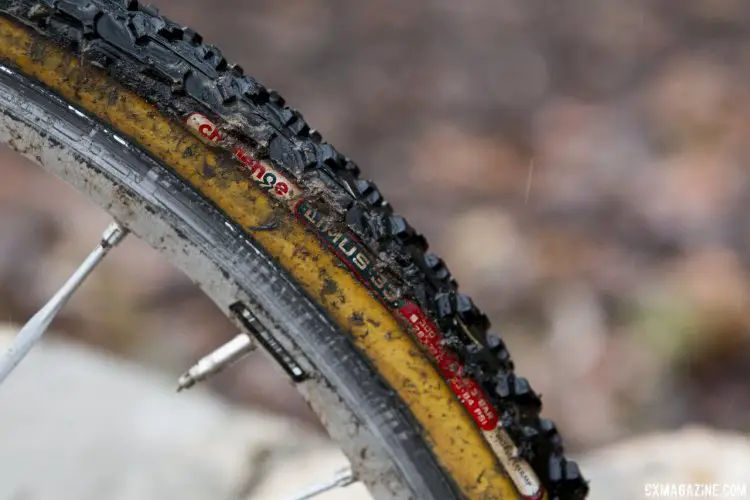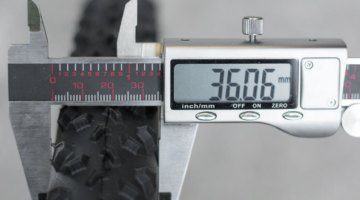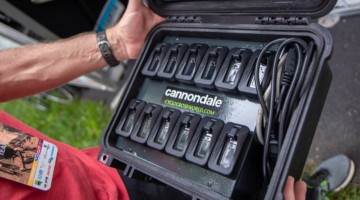
The care and keeping of tubulars can mean the difference between lasting one season or two. © Cyclocross Magazine
We’re closing in on the off-season’s half-way point. While cyclocross racing may have ended months ago, many of us might have cyclocross tires still glued to the wheels of our (gasp) still muddy bikes. Before we hit summer, and with it the heat in storage areas that wrecks havoc on cotton and rubber, now might be the last chance to save those tubulars for one more season.
We’re bringing back an oldie but a goodie for Mechanical Monday, and talking about taking care of and storing tubulars.
Ideally, much of this maintenance work happens right after the season ends. But we all know that after a full season of racing, our motivation is not always there.
There’s still time to make sure that those hard-raced tires are around for another season’s racing.
by John Gatch
Just like good wine, your expensive cyclocross tubulars require a little care and proper storage. “Ridden hard and put away wet” should never be how you describe your equipment at season end. Here are a few tips to help you summer-ize your cyclocross tubulars.
WASH
Wash your wheelset using water with dish soap or diluted Simple Green. Avoid harsh scrubbing of the delicate sidewalls with a stiff-bristled brush. Instead, use a sponge or softer brush. Stiff bristles are OK for the treads.
Thoroughly dry the wheels by hand with a clean towel and let air dry completely. Tip the wheel on its side and tilt slightly one way then the other to let any water trapped in the rim drain.
INSPECTION
Inspect the tread of the tires for cuts, glass, little bits of stone, and abrasion. Check if any lugs are loose or missing. Small cuts can be repaired and filled with Super Glue. Check out the valve cores. Are they bent, loose, dirty? Unscrew and dry them before tightening.
Look at the sidewalls. If your tires have cotton casings (Dugast, Challenge and others) they should be sealed to protect them from and moisture. An unprotected cotton sidewall will rot if wet and dry out if stored unsealed. If they are already sealed, inspect the sealant for peeling or bubbles. Dark or black spots indicate moisture and rot. If you need to re-seal, I recommend removing the old before applying a new coat of Aquaseal. Make sure the sidewalls are completely dry before sealing, otherwise you are just sealing in the moisture. If you do re-seal, wait until the sealant is dry before proceeding to the next step.
Inflate the tires to 30-40 psi and check the glue job by trying to roll the tire off the rim. Don’t check just one spot, go all the way around the rim. If you have to re-glue, I suggest waiting until late summer or whenever you are a few weeks out from your first race.
STORAGE
Store the wheels either in wheel bags or on your bike. In either case hang them – bike on a hook or wheel bags from a hook. Leave some air in the tires and check them every month or so. This will help the sidewall hold its shape and avoid pinching or folding. Latex tubes will lose some air over time. Lastly, whether the wheels are in bags or on your bike, put them in a temperature controlled, dry environment out of direct sunlight like a basement (or garage if you live somewhere where it does not drop below 45°) [updated note: same goes with the attic, although blistering hot temperatures are rough enough on wood let alone the cotton of your tubulars].
Follow these steps and your tubulars will be ready to go when September comes.
About the Author:
John Gatch races bikes, promotes cyclocross races and podcasts in Cincinnati, Ohio.




























